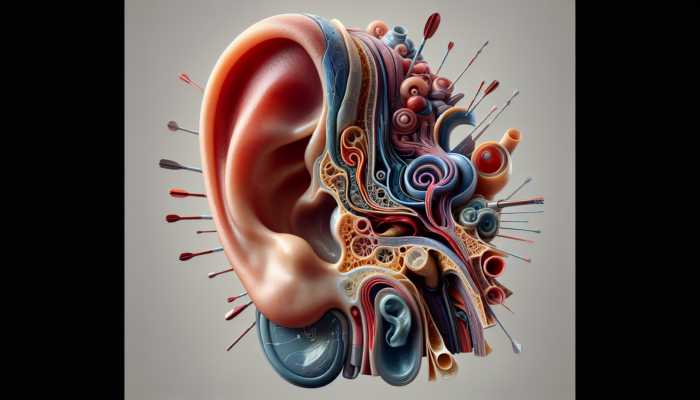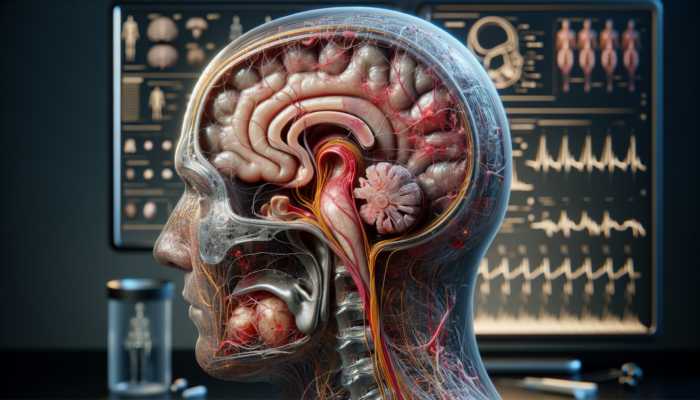Understanding the Critical Role of Hydration in Supporting Ear Health
How Does Proper Hydration Influence Ear Functionality?

Ensuring adequate hydration is a fundamental necessity for achieving optimal ear functionality. The inner ear is intricately dependent on a precise balance of fluids, which is crucial for effective hearing and maintaining balance. When the body experiences dehydration, this delicate fluid equilibrium can be disrupted, leading to a range of auditory complications. Insufficient water intake may cause a reduction in fluid levels within the inner ear, potentially resulting in conditions such as tinnitus, which is often described as a persistent ringing in the ears, and <a href="https://www.earwaxremoval.net/vertigo-from-inner-ear-issues-a-complete-guide/">vertigo</a>, a condition that creates a false sensation of spinning or dizziness. These disruptive symptoms can significantly interfere with daily activities, highlighting the importance of prioritizing hydration for overall ear health.
Furthermore, the essential structures of the inner ear, including the cochlea and the vestibular system, rely on consistent hydration to function properly. Variations in hydration levels can adversely affect the sensory cells within these components, leading to diminished hearing capabilities and balance issues. Therefore, maintaining proper hydration is vital in preventing the emergence of these problems and ensuring overall ear health. Recognizing the strong connection between hydration and ear functionality emphasizes the critical need for individuals to focus on their fluid intake to support both auditory and vestibular health.
The Essential Role of Water in Preventing Ear Infections
Water is invaluable in preserving ear health and proactively preventing ear infections. Sufficient hydration plays a key role in sustaining the mucous membranes that line the ear, acting as a vital barrier against harmful pathogens. When well-hydrated, these membranes remain moist and effective, enhancing the body’s natural defense mechanisms against bacteria and viruses. This aspect is particularly crucial in colder seasons when respiratory infections may lead to higher incidences of otitis media, commonly known as ear infections.
In addition, proper hydration assists in flushing out harmful bacteria that can accumulate in the ear canal. When the body is well-hydrated, it is more capable of expelling these unwanted pathogens, thereby decreasing the likelihood of infections. Regular intake of water also helps thin mucus secretions, facilitating the body’s ability to clear any excess buildup that could potentially cause blockages or infections. By emphasizing hydration in one’s daily routine, individuals can effectively enhance their ear health and significantly lower their risk of developing infections.
How Hydration Contributes to Maintaining Ear Moisture
The significance of maintaining adequate moisture in the ears cannot be overstated, and proper hydration is crucial to achieving this. When the body is sufficiently hydrated, it produces a healthy amount of earwax, which acts as a natural lubricant, keeping the ear canal moist and preventing dryness. This moisture is vital for overall ear health, as dry ears can lead to discomfort, itching, and even infections due to compromised protective barriers.
Moreover, hydration plays a critical role in sustaining the health of the eardrum. A well-hydrated eardrum is more resilient and less susceptible to injury. Inadequate moisture levels can cause the eardrum to become brittle, increasing its vulnerability to damage from external environmental factors or pressure fluctuations. Additionally, staying hydrated can enhance overall comfort in the ear area, reducing instances of irritation or pain. To maintain optimal ear moisture and functionality, individuals should prioritize regular hydration as an essential part of their daily health regimen, benefiting not only their ears but also their overall well-being.
Insights from Experts on the Significance of Hydration for Ear Function

What Are the Key Indicators of Dehydration Affecting the Ears?
Dehydration can manifest through various symptoms, particularly affecting ear health, making it crucial to recognize early warning signs to prevent more serious complications. Common indicators of dehydration impacting the ears include:
- <a href=”https://www.earwaxremoval.net/hearing-aids-for-tinnitus-relief-your-essential-guide/”>Tinnitus</a> (ringing in the ears)
- Dizziness or lightheadedness
- A sensation of fullness or pressure in the ears
- Dryness within the ear canal
- Challenges with balance
- Increased sensitivity to sounds
- Frequent ear infections
- Dysfunction of the Eustachian tube
Each of these symptoms serves as a warning that the ears may not be receiving the necessary hydration for optimal performance. For instance, tinnitus can worsen with dehydration, causing distress for many individuals. Likewise, the feeling of fullness in the ears may indicate an imbalance of fluids resulting from inadequate hydration. Identifying these signs early encourages proactive measures, such as increasing fluid intake, to help restore ear health and functionality.
How Can Hydration Enhance Ear Health?
Hydration is a foundational element vital for maintaining robust ear health, as it helps regulate fluid balance within the inner ear. When hydration levels are sufficient, the structures of the inner ear can operate at peak efficiency, enabling proper hearing and balance. For example, individuals who consistently drink adequate amounts of water often report fewer problems with balance and auditory clarity. This observation becomes particularly pronounced in environments with elevated noise levels, such as concerts or construction sites; staying hydrated can alleviate some auditory stressors.
Numerous real-world examples illustrate the correlation between improved hydration and enhanced ear health outcomes. Athletes, for instance, frequently notice a connection between their hydration levels and auditory performance during intense training sessions and competitions. These individuals tend to experience heightened focus and awareness, directly influencing their ability to navigate dynamic environments. Additionally, parents have reported that encouraging their children to consume sufficient water has resulted in fewer occurrences of ear infections, underscoring the preventative benefits of hydration. Such firsthand insights reinforce the importance of hydration as a vital practice for promoting ear health.
Recommended Hydration Practices for Optimal Ear Care

Experts recommend a proactive approach to hydration, particularly in relation to ear health. The general guideline is to aim for a daily water intake of at least eight glasses, or approximately two liters, though individual requirements may differ based on various factors such as climate, physical activity, and overall health conditions. Monitoring hydration levels can be as straightforward as observing urine color; light yellow typically indicates adequate hydration, while darker shades may suggest dehydration.
Beyond just water consumption, health professionals advise reducing the intake of diuretics, including caffeine and alcohol, which can lead to increased fluid loss and adversely affect ear function. Including foods that are high in water content, such as fruits and vegetables, can also bolster hydration levels. Hydration should be regarded as an integral part of a comprehensive ear care regimen, which includes regular hearing assessments and awareness of environmental factors that may influence ear health. Ultimately, these expert recommendations create a framework for maintaining optimal hydration and, in turn, promoting ear function and overall health.
The Science Behind How Hydration Influences Ear Function
How Does Hydration Impact the Inner Ear Functionality?
The inner ear comprises a complex arrangement of fluid-filled chambers essential for hearing and balance. Both the cochlea and the vestibular system are reliant on consistent hydration to function optimally. The fluids within these structures—endolymph and perilymph—must be sustained at ideal levels to guarantee that sound vibrations are accurately transmitted and balance is effectively maintained. Fluctuations in hydration levels can lead to imbalances in these fluids, resulting in impaired functionality.
Research indicates that dehydration can diminish the sensitivity of hair cells located in the cochlea, which are pivotal in converting sound vibrations into nerve signals. Furthermore, the vestibular system’s capability to detect changes in head position is dependent on fluid dynamics; any disruption may lead to dizziness or disorientation. Thus, hydration transcends mere comfort; it is fundamentally intertwined with the physiological mechanisms that support both hearing and equilibrium. Ensuring adequate hydration is vital for maintaining the intricate balance of these fluids, which, in turn, safeguards overall ear health.
The Consequences of Dehydration on Ear Fluid Equilibrium
Dehydration can profoundly influence the fluid balance within the inner ear, leading to various conditions that compromise hearing and balance. A notable example is Meniere’s disease, a disorder characterized by episodes of vertigo, hearing loss, and tinnitus. Dehydration can exacerbate the symptoms of this condition by disrupting the delicate equilibrium of fluids within the inner ear, leading to increased pressure and discomfort.
Furthermore, maintaining consistent hydration is crucial for preserving the homeostasis of endolymph and perilymph. When these fluids are depleted, the inner ear may fail to function properly, resulting in a range of auditory and vestibular symptoms. The fragile structures within the inner ear require a stable environment to flourish; thus, ensuring adequate hydration can serve as a preventive measure against the onset of these debilitating conditions. Individuals experiencing symptoms related to ear health should prioritize hydration as a fundamental aspect of their care strategy.
Investigating the Relationship Between Hydration and Hearing Loss Prevention
Research increasingly emphasizes the link between hydration and the prevention of hearing loss. Studies indicate that adequate hydration is crucial for maintaining the health of the inner ear’s fluid-filled structures, which are essential for auditory function. For instance, in aging populations, sustaining hydration may help mitigate deterioration in hearing acuity associated with age-related changes in inner ear fluid dynamics.
Moreover, proper hydration is believed to positively influence the health of hair cells in the cochlea, responsible for detecting sound. Dehydration can lead to a decline in the efficiency of these cells, thereby increasing the risk of hearing loss over time. Consequently, cultivating a habit of regular hydration can be a straightforward yet effective strategy for enhancing long-term ear health and preserving auditory capabilities. As research continues to explore the complexities of hydration’s role in ear health, it becomes increasingly evident that adequate water intake is a fundamental aspect of preventive care.
The Importance of Electrolytes in Supporting Ear Hydration
Electrolytes, such as sodium and potassium, are essential for maintaining fluid balance within the inner ear. These minerals play a critical role in regulating fluid distribution, ensuring that the intricate structures of the ear remain adequately hydrated. When hydration levels drop, the balance of these electrolytes can be disrupted, potentially leading to issues with hearing and balance.
For example, sodium is vital for fluid retention, aiding in the maintenance of the proper osmotic balance necessary for the inner ear’s functioning. Potassium is also essential for the electrochemical gradients that enable hair cells in the cochlea to respond to sound stimuli. Therefore, maintaining a balanced intake of fluids and electrolytes is crucial for promoting optimal ear function. Individuals should consider not only their water intake but also the inclusion of electrolyte-rich foods in their diets, particularly after engaging in physical activities that may lead to excessive sweating. This comprehensive approach to hydration ensures that the ear’s intricate systems function in harmony, supporting both auditory and vestibular health.
The Impact of Hydration on Preventing Ear Infections
How Does Hydration Help in Preventing Ear Infections?
Hydration is instrumental in strengthening the immune system, which is a key factor in preventing ear infections. When the body is adequately hydrated, it can effectively produce mucus that keeps mucous membranes moist, acting as a protective barrier against bacteria and viruses. A well-hydrated body is far more capable of combating infections and sustaining overall ear health.
Additionally, maintaining hydration ensures that the natural cleansing processes of the body function efficiently. This includes the expulsion of bacteria and other pathogens that could lead to ear infections. In populations with high rates of ear infections, such as children, ensuring adequate hydration can be especially beneficial. Parents should encourage fluid intake, particularly during colder months when respiratory infections are more common, in order to reduce the risk of subsequent ear infections. Consequently, promoting hydration emerges as a vital preventive strategy in maintaining ear health.
Understanding the Connection Between Hydration and Earwax Production
Hydration significantly influences earwax production, which plays a crucial role in maintaining ear health. Adequate hydration helps regulate the consistency of earwax, preventing it from becoming too dry or compacted. This regulation is essential, as dry earwax can lead to blockages that may cause discomfort or infections. In contrast, individuals who are well-hydrated tend to produce a balanced amount of earwax, which serves to protect the ear canal from dirt, bacteria, and other harmful substances.
When hydration levels are optimal, the ear’s natural self-cleaning mechanisms work more effectively. Earwax can be expelled naturally, reducing the risk of buildup that could lead to infections or other complications. It is important for individuals to be conscious of their hydration status, as proper fluid intake can contribute to maintaining healthy earwax production. By prioritizing hydration, people can support not only their general health but also the specific needs of their ears.
How Hydration Influences the Immune System in Relation to Ear Health
The immune system plays a crucial role in protecting against infections, and hydration is fundamental to its optimal functioning. Proper hydration supports the immune response by ensuring that the body can efficiently transport white blood cells and other immune components to areas where they are needed most. This aspect is particularly vital for ear health, as infections can arise from the body’s inability to mount an adequate defense.
Furthermore, hydration helps maintain the integrity of mucous membranes, which serve as a barrier against pathogens. When these membranes remain moist through sufficient fluid intake, the risk of infections is significantly decreased. Additionally, staying hydrated can help alleviate inflammation, a common precursor to infections. By ensuring that the body remains well-hydrated, individuals not only support their immune responses but also promote ear health and the prevention of infections.
The Importance of Hydration for Eustachian Tube Functionality
The Eustachian tube is vital for equalizing pressure in the ear, and adequate hydration is essential for its proper functioning. When the body is dehydrated, the mucous membranes lining the Eustachian tube may become dry and irritated, leading to dysfunction. This dysfunction can result in fluid buildup, creating an environment conducive to bacterial growth and increasing the likelihood of infections.
Sufficient hydration aids in maintaining the moisture and flexibility of the Eustachian tube, ensuring it can open and close effectively to equalize pressure during changes in altitude or activities such as flying or diving. Individuals who prioritize hydration are less likely to experience issues such as ear popping or discomfort during these situations. Therefore, maintaining proper hydration becomes essential for ensuring the Eustachian tube’s functionality, ultimately supporting overall ear health and comfort.
How Hydration Plays a Role in Reducing Ear Inflammation
Ear inflammation often precedes infections and other complications, making hydration a critical factor in reducing these risks. Proper hydration supports the body’s overall hydration and circulation, which are vital for minimizing inflammation. When adequately hydrated, the body can efficiently transport nutrients and oxygen to tissues while flushing out toxins—processes that are essential for managing inflammation.
Moreover, hydration helps maintain fluid balance in the ears, which can mitigate swelling and discomfort associated with inflammation. For individuals prone to ear infections or inflammatory conditions, ensuring proper hydration can serve as a preventative measure. By prioritizing hydration, individuals can effectively support their body’s natural anti-inflammatory processes, thereby reducing the risk of ear-related issues.
Research-Backed Insights on Why Hydration is Essential for Ear Function
What Evidence Exists Regarding Hydration and Ear Health?
Numerous studies highlight the significant connection between hydration and ear health. Research indicates that proper hydration is essential for maintaining fluid balance in the inner ear, a critical element for both hearing and balance. Insufficient fluid intake can lead to various ear health issues, including infections and auditory impairments. Recent findings suggest that populations with higher rates of dehydration are also more susceptible to ear-related conditions, reinforcing the importance of hydration in preventive care.
Moreover, emerging research is beginning to explore how proper hydration can influence long-term auditory outcomes. Studies have linked consistent hydration with reduced risks of hearing loss over time, suggesting that maintaining adequate fluid intake is a straightforward yet effective strategy for promoting ear health. As research continues to evolve in this area, it becomes increasingly evident that hydration is not merely a supplementary aspect of health but a fundamental component of maintaining auditory function.
The Relationship Between Hydration and Symptoms of Tinnitus and Vertigo
Hydration has demonstrated a significant role in alleviating symptoms associated with tinnitus and vertigo, both of which can arise from fluid imbalances in the inner ear. When adequately hydrated, the inner ear can maintain its fluid balance, which is crucial for the proper functionality of both the auditory and vestibular systems. Conversely, dehydration can exacerbate these conditions, leading to heightened symptoms and discomfort.
Many individuals suffering from tinnitus report that increasing their fluid intake helps diminish the severity of their symptoms. Similarly, maintaining hydration can alleviate vertigo symptoms by ensuring that the structures responsible for balance are functioning optimally. By prioritizing hydration, individuals can take proactive steps to manage these conditions, ultimately enhancing their quality of life.
How Hydration Supports Long-Term Ear Health
Long-term hydration is crucial for preserving ear health and preventing a variety of auditory issues. Adequate fluid intake is vital for the overall health of the inner ear, ensuring that its structures remain functional and responsive over time. Individuals who consistently maintain hydration often experience better hearing acuity as they age, as proper fluid intake helps prevent the deterioration of critical ear components.
Additionally, hydration plays a significant role in preventing chronic conditions such as recurrent ear infections. By keeping mucous membranes moist and functional, proper hydration reduces the risk of infections and inflammation, which can lead to more severe complications. Therefore, fostering a habit of regular hydration is an effective strategy for promoting long-term ear health and maintaining optimal auditory function.
Effective Strategies for Staying Hydrated to Support Ear Health
What Are Optimal Hydration Practices for Ear Health?
Implementing effective hydration strategies is essential for enhancing ear health. Here are several key practices to ensure adequate hydration levels:
- Consume at least eight glasses of water daily.
- Monitor urine color to assess hydration status.
- Incorporate hydrating foods, such as fruits and vegetables, into your diet.
- Limit excessive intake of caffeinated and alcoholic beverages.
- Set reminders to drink water throughout the day.
- Carry a reusable water bottle for convenient hydration on the go.
- Adjust fluid intake based on physical activity levels and environmental conditions.
- Consider including electrolyte-rich beverages after intense workouts.
By adopting these practices, individuals can establish a sustainable hydration habit that benefits not only their overall health but also specifically their ear health. Consistently implementing these strategies fosters an environment conducive to optimal ear function and health.
Understanding the Importance of Hydration Across Different Life Stages
Hydration requirements vary significantly across different life stages, highlighting the need to adjust fluid intake accordingly. For example, infants require a higher water intake relative to their body weight due to their rapid growth and development. Young children also necessitate sufficient hydration for proper physiological function as they engage in physical activities and explore their surroundings.
As individuals transition into adulthood, hydration needs may shift based on lifestyle factors such as physical activity, climate, and overall health. Older adults, in particular, may encounter challenges with hydration due to altered thirst perception and a decreased ability to conserve fluids. Emphasizing hydration throughout all life stages is essential for maintaining optimal ear health and preventing age-related auditory issues.
How Diet Influences Hydration and Supports Ear Health
Incorporating a diet rich in hydrating foods can significantly benefit ear health. Many fruits and vegetables contain high water content and provide essential nutrients that support overall health. For instance, cucumbers, watermelon, oranges, and strawberries not only contribute to hydration but also deliver vitamins and antioxidants that are beneficial for the ears.
Additionally, foods rich in omega-3 fatty acids, such as salmon and walnuts, can promote ear health by reducing inflammation. Including these nutrient-dense foods in daily meals can enhance hydration while supplying the necessary nutrients to optimize ear function. By combining a focus on hydration with a balanced diet, individuals can establish a comprehensive strategy for maintaining ear health.
The Connection Between Hydration and Ear-Related Disorders
How Does Hydration Influence Meniere’s Disease Symptoms?
Hydration plays a pivotal role in managing the symptoms of Meniere’s disease, a condition characterized by episodes of vertigo, hearing loss, and tinnitus. Maintaining proper hydration helps regulate fluid balance within the inner ear, which is essential for preventing symptom exacerbation. When the body is adequately hydrated, the inner ear can function more efficiently, thereby minimizing the occurrence of severe vertiginous episodes.
Individuals affected by Meniere’s disease often find that dehydration can trigger or worsen their symptoms. By prioritizing hydration, they can reduce the frequency of these episodes, resulting in a better quality of life. Simple practices such as drinking enough water and carefully monitoring fluid intake can significantly influence the management of Meniere’s disease, underscoring the critical importance of hydration for overall ear health.
How Hydration Affects Otitis Media Prevention
Hydration is a crucial factor in preventing otitis media, or middle ear infections, especially in children. When adequately hydrated, the mucous membranes in the ear remain moist and functional, decreasing the likelihood of bacterial growth and subsequent infection. Sufficient fluid intake also bolsters the immune system, enhancing the body’s ability to fend off infections that could lead to otitis media.
Parents should encourage their children to maintain proper hydration, particularly during cold and flu seasons when the risk of ear infections rises. By prioritizing hydration, families can effectively lower the risk of ear infections and promote overall ear health, illustrating the preventive potential of appropriate hydration practices.
Understanding Hydration’s Role in Eustachian Tube Functionality
Eustachian tube dysfunction can lead to discomfort and pressure imbalances in the ear, often exacerbated by dehydration. When adequately hydrated, the Eustachian tube remains flexible and functional, allowing for proper pressure equalization in the ear. In contrast, dehydration can dry out the mucous membranes, hindering the Eustachian tube’s ability to operate effectively.
By ensuring proper hydration, individuals can help prevent Eustachian tube dysfunction and maintain overall ear health. Those prone to pressure-related issues should prioritize fluid intake, particularly during travel or changes in altitude. Cultivating a habit of hydration can support the Eustachian tube’s function and enhance overall comfort in the ear.
The Comprehensive Impact of Hydration on Ear Function
How Does Hydration Contribute to Overall Ear Health?
Hydration serves as a cornerstone of overall ear health, supporting the fluid balance within the inner ear and aiding in the prevention of infections. Adequate hydration ensures that the delicate structures of the ear continue to function optimally, enabling both hearing and balance. When the body is well-hydrated, the risk of developing ear-related complications significantly decreases.
Moreover, hydration supports the production of earwax, a crucial protective element that helps keep the ear canal clean and free from debris. By maintaining appropriate moisture levels, individuals foster an environment that promotes both auditory function and overall ear health. In summary, hydration is a simple yet effective practice that should be prioritized due to its numerous benefits for ear health.
The Long-Term Benefits of Hydration for Ear Function
The long-term advantages of consistent hydration for ear function are substantial, particularly as individuals age. Adequate fluid intake helps preserve the health of the inner ear’s structures, which are vital for maintaining hearing and balance. Research indicates that individuals who maintain proper hydration levels are less likely to encounter age-related hearing loss and other chronic ear conditions.
Additionally, staying hydrated can mitigate the risk of recurrent infections and inflammation, which could lead to lasting damage if left unaddressed. By adopting a habit of regular hydration, individuals can support their ear health over time, promoting a higher quality of life and reducing the likelihood of severe auditory issues. This long-term perspective highlights hydration’s critical role as a foundational element of ear care.
The Importance of Educating Others About Hydration and Ear Health
Educating others about the significance of hydration for ear health is a vital step towards promoting better health outcomes. As awareness increases regarding the impact of hydration on ear function, individuals can make informed decisions that benefit not only their own ear health but also that of their families and communities. Sharing knowledge about the relationship between hydration and ear health empowers individuals to prioritize fluid intake, ultimately contributing to healthier populations.
Public health initiatives and community programs centered around hydration education can play a crucial role in enhancing awareness of ear health. By emphasizing the straightforward yet effective practice of staying hydrated, communities can collaborate to reduce the prevalence of ear-related conditions and improve overall health. The ripple effect of education in this domain can lead to better quality of life for individuals of all ages.
How Hydration Helps Prevent Ear-Related Dizziness
Dizziness is a common symptom linked to various ear health issues, and hydration plays a significant role in its prevention. Proper hydration maintains fluid dynamics within the inner ear, which are essential for balance. When individuals become dehydrated, these dynamics can become disrupted, leading to sensations of dizziness or vertigo, making everyday activities difficult.
By prioritizing hydration, individuals can support their vestibular system and diminish the likelihood of experiencing dizziness. This is particularly critical for those engaged in activities that require focus and stability, such as driving or participating in sports. Maintaining an adequate fluid intake becomes a key factor in ensuring balance and stability, highlighting the direct connection between hydration and ear-related dizziness.
The Effect of Hydration on Earwax Production and Ear Canal Health
Proper hydration is essential for maintaining the health of the ear canal and regulating earwax production. When the body is sufficiently hydrated, earwax is produced in balanced amounts, providing an effective barrier against dirt and bacteria. Conversely, dehydration can lead to dry earwax, which may become compacted and increase the risk of blockages and infections.
Additionally, maintaining adequate hydration helps keep the ear canal moist, preventing dryness and irritation. This promotes a healthier environment for the ears, reducing the likelihood of discomfort and infection. By prioritizing hydration, individuals can enhance their ear canal health, ensuring that earwax effectively fulfills its protective role.
FAQs
What is the recommended daily water intake for adults?
Experts recommend that adults aim for at least eight glasses, or about two liters, of water daily; however, individual needs may vary based on activity levels and climate.
Can dehydration lead to ear infections?
Yes, dehydration can increase the risk of ear infections by drying out mucous membranes, which act as protective barriers against pathogens.
How does hydration affect tinnitus symptoms?
Proper hydration can help alleviate tinnitus symptoms by maintaining fluid balance in the inner ear, thereby reducing the severity of ringing sensations.
Are there specific foods that can aid hydration?
Yes, fruits and vegetables with high water content, such as cucumbers, watermelon, and oranges, significantly contribute to hydration.
How does hydration influence balance?
Hydration supports fluid dynamics within the inner ear, which are crucial for maintaining balance. Dehydration can disrupt these fluids, potentially leading to dizziness.
What role do electrolytes play in hydration?
Electrolytes such as sodium and potassium help regulate fluid balance in the body, which is essential for optimal ear function and overall hydration.
How can I tell if I’m dehydrated?
Common signs of dehydration include dark yellow urine, dry mouth, fatigue, dizziness, and decreased urine output.
Is there a connection between hydration and hearing loss?
Yes, research suggests that adequate hydration can help prevent age-related hearing loss by supporting the health of inner ear structures.
Can children’s ear infections be prevented through hydration?
Maintaining proper hydration can help reduce the risk of ear infections in children by keeping mucous membranes moist and functional.
What are some hydration tips for older adults?
Older adults should closely monitor their fluid intake, prioritize hydrating foods, and consider using reminders to ensure they drink enough water throughout the day.
Explore our journey on X!
The post Hydration’s Impact on Ear Function: Essential Insights appeared first on The Microsuction Ear Wax Removal Network.
The post Hydration’s Impact on Ear Function: Essential Insights appeared first on Healthcare Marketing Service.



















